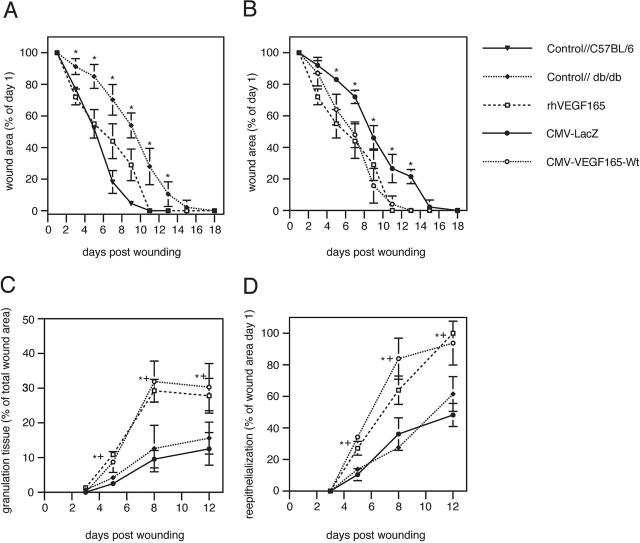Figure 2.
Topically applied rhVEGF165 protein or transfection with CMV-VEGF165-Wt expression constructs accelerates wound closure of full-thickness wounds in db/db mice. A: Wounds in db/db mice treated with rhVEGF165 protein or methylcellulose (control//db/db); wounds in C57BL/6 mice were treated with methylcellulose only (control//C57BL/6) (rhVEGF165 versus control//db/db, *P < 0.004). B: Wounds in db/db mice transfected with CMV-VEGF165-Wt or CMV-LacZ expression constructs (CMV-VEGF165-Wt versus CMV-LacZ, *P < 0.02). C: Granulation tissue formation in rhVEGF165 protein or methylcellulose-treated (control//db/db) or CMV-LacZ- or CMV-VEGF165-Wt-transfected wounds in db/db mice (rhVEGF165 versus control//db/db, *P < 0.03; CMV-VEGF165-Wt versus CMV-LacZ, +P < 0.03). D: Re-epithelialization in rhVEGF165 protein- or methylcellulose-treated (control//db/db) or CMV-LacZ- or CMV-VEGF165-Wt-transfected wounds in db/db mice (rhVEGF165 versus control//db/db, *P < 0.01; CMV-VEGF165-Wt versus CMV-LacZ, +P < 0.02). Wounds are n = 8/time point for each treatment modality; data are expressed as mean ± SD.

